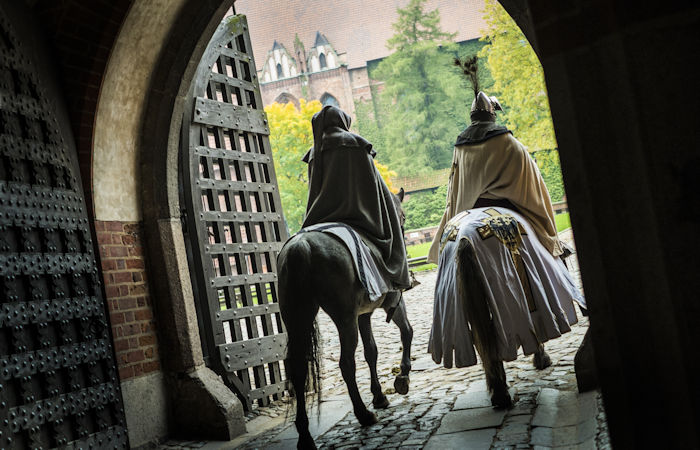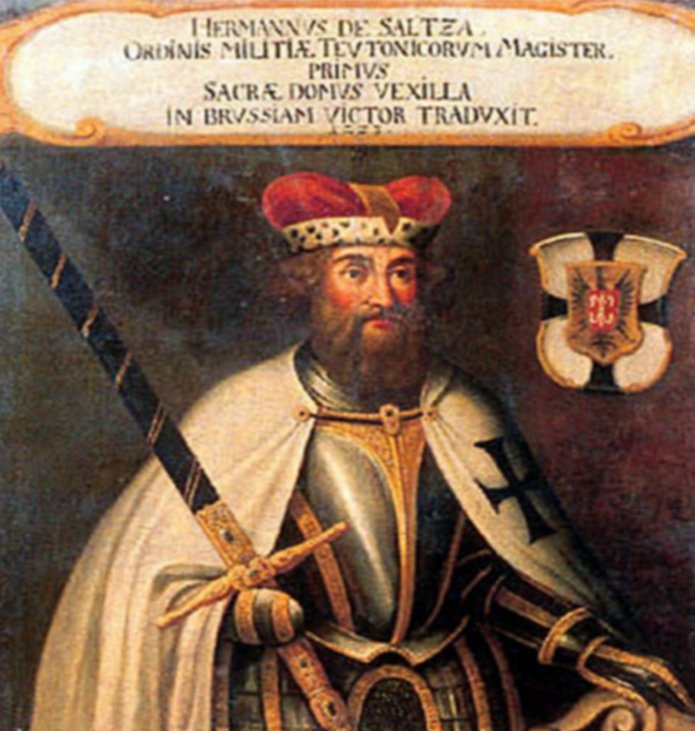Teutonic Knights – Facts And History About The Christian Military Order
David Tee - AncientPages.com - The Order of Brothers of the German House of Saint Mary in Jerusalem (commonly known as the Teutonic Order) was founded in 1192 in Acre. Its original mission was to protect Christian tourists as they journeyed to the Holy Land and establish hospitals.
Teutonic Knights, Malbork. Poland. Credit: Adobe Stock - wojtekurbanek
The Teutonic Knights were also known by several shorter names, such as Deutscher Orden or the German Order. While it served a humanitarian purpose, the Teutonic Knights were primarily a military order and participated in the 3rd Crusade (1187-1192 CE) to retake Jerusalem from the Arabs. The Knights wore white surcoats with a black cross.
Pope Innocent, AD 1198-1216, established the Teutonic Knights as an independent military order. Throughout their early years, the Teutonic Knights built castles and fortresses to protect Crusader lands throughout the region.
Membership In The Teutonic Knights
The membership of this new organization was split into two groups. The first group was the knights themselves. They had to be of German birth and part of society's noble or knight class.
The second group was made up of the priestly order. These men did not have to be of German nobility. While the knights had the military duty to fight the infidels and help the sick, they had to perform these duties under three vows: poverty, chastity, and obedience.
On the other hand, the priests did not fight but performed mass, offered the sacraments, and tried to convert the pagans to Christianity. In Lithuania and Prussia, priests were not allowed to be promoted to top leadership positions, but they could become commanders in Germany.
The Important Leaders Of The Order
Although he wasn’t the first overall master of the Teutonic Knights, he was one of the more important earlier rulers. Herman von Salza (1209-1239) changed the way the Teutonic Knights worked, and his diplomatic skills brought prestige, wealth, and land to the order.
Salza also made the knights more of a military order, initially helping the King of Hungary protect his borders from the Cumans. They were later thrown out when the Knights sought to be placed under papal authority and removed from the King’s command.
Heinrich von Hohenlohe (1244-1253), the 6th Master, helped the knights gain more inland and authority in Prussia. The 8th Master, Popon von Osterna (1253-1262), helped solidify the Teutonic Knights’ rule in Prussia and sped up the transfer of German peasants to their new land.
When Master Hartman von Heldrungen died in 1283, the Teutonic Knights controlled Prussia and built many castles to defend their territory. After Christianizing Prussia, the Teutonic Knights set their sights on Poland and Lithuania.
The Many Battles Of The Teutonic Knights
By this time, the Teutonic Knights focused more on gaining power and control over other people and lands and gathering a lot of wealth. Poland was initially an ally of the Teutonic Knights, but the latter’s conquest of Pomerelia changed Poland from a friend to an enemy.
It wasn’t till The Treaty of Kalisz in 1343 that stopped the open warfare between the Knights and the country of Poland. Lithuania was a more formidable opponent to the knights as the former people would take the knights and their people captive, then permanently enslave them, kill them, or torture them.
The Knights, on the other hand, found that once they enslaved the captured Lithuanians and became Christians, the Knights could no longer treat their enemy in such a harsh manner. This led to a decrease in attempts to Christianize their captives.
Eventually, Poland and Lithuania joined forces and gathered an army of 160,000 men. They outnumbered the Teutonic Knights by a margin of 2 to 1, yet the battle’s outcome was not determined as winners and losers as the Polish army lost 60,000 men to the 40,000 the knights had lost.
Over the next two centuries, the Knights lost their independence, authority, and much of their land. Part of their demise was that the Teutonic Knights stood alone against a combined force of Lithuanians, Poles, Russians, and Mongols.
One of their armies was utterly wiped out, and the Order became more secular.
New Orders For The Old Order
The 17th century saw the rise of Grand Master Maximilian, who, on February 27th, 1606, provided new statutes to guide the Teutonic Knights. These statutes brought the Knights back to their original purpose of fighting the infidels and aiding the sick, along with observing religious celebrations, etc.
By the 18th century, the idea of Christian Crusades was outdated, and the Knights had little to do. Napoleon Bonaparte did not help their failing purpose, as he also took much of their land and authority.
The Treaty of Pressburg of December 26, 1805, also removed a large portion of the Order’s sovereignty, placing it under the rule of the Imperial House of Austria. But their fortunes changed in 1826 when the Knights were on the verge of extinction.
With only four professional knights left in service, Holy Roman Emperor Francis I (1708–1765) restored the Knights’ rights lost at the signing of the Treaty. He also made them an autonomous, religious, and military Institute, with himself named the protector of the Order.
World War I Brought More Changes
With a backlash against the nobility, the Habsburgs (1526–1804), royalty, and titles, the old Teutonic Knights' way of doing things had to change. No longer could it be seen as a military order; the Teutonic Knights were changed into a strictly religious order overseen by a priest and not a military man.
The Teutonic Order of Saint Mary’s Hospital in Jerusalem (or the Deutscher Orden) returned to its original 12th-century roots save for the military purpose. It was to focus on helping the sick, Christianize pagans, and similar duties.
This new re-invention of the Teutonic Knights received papal blessings on November 27, 1929. It suffered under Hitler’s rule but was returned after his defeat in World War II. The Teutonic Knights continue in this charitable capacity today.
Written by – David Tee - AncientPages.com Staff Writer
Updated on Aug 5, 2024
Copyright © AncientPages.com All rights reserved. This material may not be published, broadcast, rewritten or redistributed in whole or part without the express written permission of AncientPages.com
Expand for referencesReferences:
Urban W. Teutonic Knights
Woodhouse F.C. The Military Religious Orders of the Middle Ages
More From Ancient Pages
-
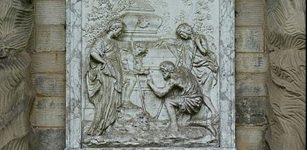 Shepherd’s Monument Mystery: Yet Another Undeciphered Inscription
Featured Stories | Jun 26, 2023
Shepherd’s Monument Mystery: Yet Another Undeciphered Inscription
Featured Stories | Jun 26, 2023 -
 Huge, Ancient Underground City Filled With Artifacts Discovered In Mardin, Turkey
Archaeology | Apr 20, 2022
Huge, Ancient Underground City Filled With Artifacts Discovered In Mardin, Turkey
Archaeology | Apr 20, 2022 -
 Secrets Of Lake Huron – Mysterious Disappearance Of Long-Lost Steamship Solved
Archaeology | Nov 3, 2023
Secrets Of Lake Huron – Mysterious Disappearance Of Long-Lost Steamship Solved
Archaeology | Nov 3, 2023 -
 Is An Ancient Temple Dedicated To The Lioness Goddess Repit Hidden In The Cliffs Of Athribis?
Archaeology | Dec 10, 2024
Is An Ancient Temple Dedicated To The Lioness Goddess Repit Hidden In The Cliffs Of Athribis?
Archaeology | Dec 10, 2024 -
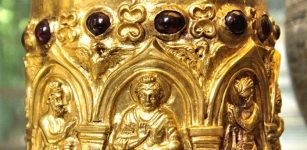 The Bimaran Casket – Rare Golden Artifact Found In Ancient Stupa
Artifacts | Dec 17, 2018
The Bimaran Casket – Rare Golden Artifact Found In Ancient Stupa
Artifacts | Dec 17, 2018 -
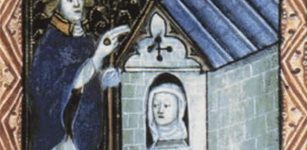 Coronavirus: Advice From The Middle Ages For How To Cope With Self-Isolation
Featured Stories | Mar 29, 2020
Coronavirus: Advice From The Middle Ages For How To Cope With Self-Isolation
Featured Stories | Mar 29, 2020 -
 Water Storage Failure And Short-Lived Koh Ker Capital Of Khmer Empire
Archaeology | Nov 1, 2019
Water Storage Failure And Short-Lived Koh Ker Capital Of Khmer Empire
Archaeology | Nov 1, 2019 -
 7,000-Year-Old ‘Immortal City’ Of Misis – Excavations Shed Light On Its Fall
Archaeology | Aug 25, 2015
7,000-Year-Old ‘Immortal City’ Of Misis – Excavations Shed Light On Its Fall
Archaeology | Aug 25, 2015 -
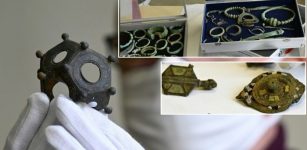 More Than 27,000 Artifacts Illegally Collected By ‘Expert In Archaeology’ – Seized In France
Artifacts | Dec 18, 2020
More Than 27,000 Artifacts Illegally Collected By ‘Expert In Archaeology’ – Seized In France
Artifacts | Dec 18, 2020 -
 Advent: Facts And History About The Christian Season Celebration
Christmas Traditions | Dec 1, 2024
Advent: Facts And History About The Christian Season Celebration
Christmas Traditions | Dec 1, 2024 -
 Why Did We Abandon Roman Numerals?
Ancient History Facts | Apr 25, 2019
Why Did We Abandon Roman Numerals?
Ancient History Facts | Apr 25, 2019 -
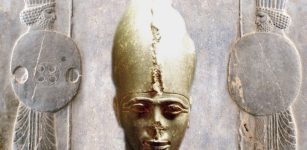 Pharaoh Psamtik III’s Deadly Encounter With Cambyses II Of Persia Ended The 26th Dynasty Of Egypt
Featured Stories | Apr 16, 2021
Pharaoh Psamtik III’s Deadly Encounter With Cambyses II Of Persia Ended The 26th Dynasty Of Egypt
Featured Stories | Apr 16, 2021 -
 What Caused The Unexplained Change In Europeans’ DNA 4000-5000 Years Ago? Scientists Say The Genetic Turnover Remains A Mystery
Archaeology | Aug 27, 2014
What Caused The Unexplained Change In Europeans’ DNA 4000-5000 Years Ago? Scientists Say The Genetic Turnover Remains A Mystery
Archaeology | Aug 27, 2014 -
 Climate Change Will Soon Erase Ancient Cave Art Of Sulawesi, Indonesia
Archaeology | May 17, 2021
Climate Change Will Soon Erase Ancient Cave Art Of Sulawesi, Indonesia
Archaeology | May 17, 2021 -
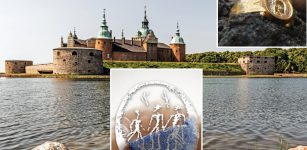 Magnificent Alsengem Among 30,000 Archaeological Objects Discovered In Kalmar, Sweden
Artifacts | Mar 5, 2024
Magnificent Alsengem Among 30,000 Archaeological Objects Discovered In Kalmar, Sweden
Artifacts | Mar 5, 2024 -
 Sunken Land Of Lyonesse: Legendary Kingdom That Influenced Stories Of Writers And Fishermen
Featured Stories | Mar 16, 2017
Sunken Land Of Lyonesse: Legendary Kingdom That Influenced Stories Of Writers And Fishermen
Featured Stories | Mar 16, 2017 -
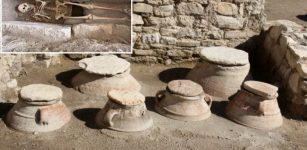 Kadıkalesi Castle Ancient Ruins: Female Skeleton Unearthed At An Archaeological Dig
Archaeology | Jan 9, 2023
Kadıkalesi Castle Ancient Ruins: Female Skeleton Unearthed At An Archaeological Dig
Archaeology | Jan 9, 2023 -
 Top 10 Discoveries About Our Ancient Ancestors In 2023
Archaeology | Dec 29, 2023
Top 10 Discoveries About Our Ancient Ancestors In 2023
Archaeology | Dec 29, 2023 -
 Five Magnificent Engraved Ancient Tombs Discovered Near King Merenre Pyramid In Saqqara, Egypt
Archaeology | Mar 19, 2022
Five Magnificent Engraved Ancient Tombs Discovered Near King Merenre Pyramid In Saqqara, Egypt
Archaeology | Mar 19, 2022 -
 On This Day In History: Maltese Rebellion Took Place – On Sep 8, 1775
News | Sep 8, 2016
On This Day In History: Maltese Rebellion Took Place – On Sep 8, 1775
News | Sep 8, 2016

